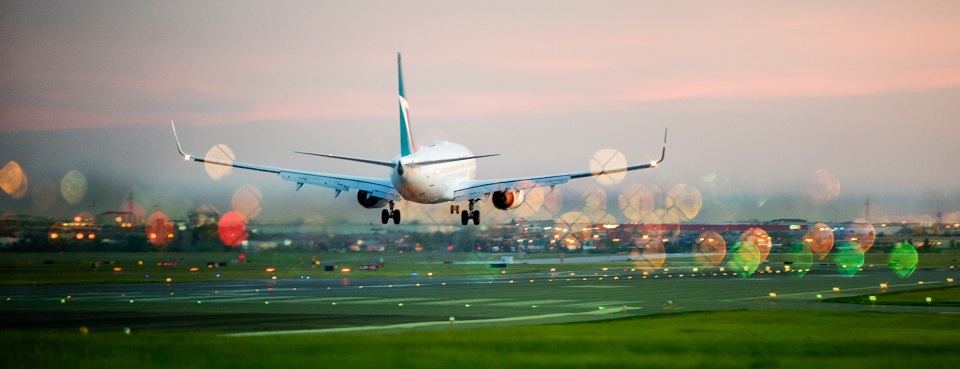Aviation industry encourages long-term climate action from governments
The aviation industry, alongside environmental groups, will request governments to set a timeframe for agreement on a long-term target to reduce CO2 emissions from air transport at a meeting of the International Civil Aviation Organization (ICAO) starting this week in Montreal.
The aviation sector – including the world’s airlines, airports, air traffic management providers and the makers of aircraft and engines – was one of the first to set long-term climate goals a decade ago. The industry says that it would like to see agreement reached on a comprehensive 2050 goal for aviation CO2 by the next ICAO Assembly in 2022 to leverage support for its climate action.
Speaking on the sidelines of the UN Climate Action Summit, Michael Gill, Executive Director of the cross-industry Air Transport Action Group said: “Aviation helps power the global economy and provides connectivity to families, business and society whilst also supporting 65.5 million jobs. It is growing to meet the needs particularly of developing economies, but we also recognize that with growth comes responsibility.”
“The industry is committed to further reducing its climate impact – already a flight taken by a passenger today will produce half the CO2 that the same flight would have in 1990 – and our existing industry long-term goal to halve net total CO2 emissions by 2050 remains a robust and ambitious focus for industry action in line with the Paris Agreement. We urge governments also to adopt a pathway towards a UN-backed long-term goal for aviation and set in place the right policy environments to meet the needs of that goal. Importantly, those policies must be implemented by governments in the short-term to help build a foundation for meaningful long-term reductions in CO2: we can’t wait until 2049 to take action.”
Aviation is one of the sectors of the global economy where emissions reductions are recognised as a significant challenge. The relatively easy solutions available to other sectors (such as electrification) are not immediately deployable for air transport. However, the sector has been making significant progress in improving efficiency through the deployment of new technology, improvements in operations, infrastructure changes and has begun its journey on an energy transition away from fossil fuels.
Earlier this year, airlines and started the process to monitor, report and verify emissions from their international flights in preparation for the Carbon Offsetting and Reduction Scheme for International Aviation (CORSIA), an ICAO-backed project which will offset 80% of the post-2020 growth in international aviation CO2.
Michael Gill says: “The aviation industry backs the CORSIA process and is working hard to prepare for implementation. We are encouraged to see 81 States already on board with the voluntary phase and strongly urge all other countries to consider being part of this historic venture. Already, over $40bn in climate finance is expected to be generated through CORSIA as the air transport sector plays its role in pursuing climate action.”
This is the first such market mechanism to be rolled out for a single global sector and is seen as a measure that will help mitigate the growth in air transport emissions while longer-term solutions for CO2 are being ramped-up.
Director General of Airports Council International, Angela Gittens, said: “Along with its commitment to CORSIA, the aviation industry has invested billions in measures and practices which have made significant progress in reducing its environmental impact. This is a global challenge that requires a coordinated global response. Collaboration across the whole industry is needed to reduce emissions and airports remain committed to the active steps needed to address the environmental impact of operations.”
Civil Air Navigation Services Organisation Director General Simon Hocquard said: “The ATM industry is working with our partners and States to improve the environmental performance of aviation. From implementing new operational procedures to adopting the latest technologies, our members are playing an important role in developing sustainable air transport. We welcome the collaborative steps being taken to realise this”.
Alexandre de Juniac, Director General and CEO of the International Air Transport Association, said: “The most promising means to achieving a sustainable future is with sustainable aviation fuels (SAF). Airline investments in SAF have powered hundreds of thousands of commercial flights. But the potential of SAF is far from being realised because costs are too high. Governments must play their role and set a comprehensive policy framework to support the commercialisation of this critical key to sustainability.”
The Director General of the International Business Aviation Council, Kurt Edwards, added: “Sustainable aviation fuel (SAF) already powers a small percentage of flights, demonstrating aviation’s commitment to reducing its carbon footprint. However, its wide availability at competitive prices remains a key hurdle. Industry urges governments to implement policies to incentivise the production and up-take of SAF to meet long-term CO2 reduction goals.”
Chair of the International Coordinating Council of Aerospace Industries Associations, Eric Fanning, said: “Environmental performance is key for manufacturers. We’re spending billions on research and development to both make the next generation of aircraft and engines more fuel efficient and explore the potential of new technologies – like electrification, lighter materials, and new designs – for reducing aviation’s impact in the longer term.”

